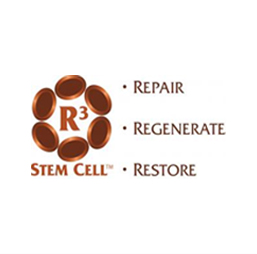Headaches have different degrees and names they’re known by. Typically, a headache is characterized by pain in different parts of the head. It’s also not categorized as a serious ailment because of how common it can get.
Headaches are caused by tiredness, stress, alcohol, or some types of foods. Other times, they can be the symptom of an eye problem. There are also situations where headaches cross into serious health conditions. The types of headaches include migraines, tension headaches, cluster headaches, and sinusitis.

The two most common forms of headaches are migraines and tension headaches. While they’re similar and can be easily mistaken for the other, they have differences. Here, we discuss the differences between these two headaches and the treatment options available.
Tension Headaches
Tension headaches are so named because of the strain felt in the head when the muscles in the neck and scalp tighten. They are the most common form of headaches and you’ll likely feel a dull pain and pressure in the temples and forehead areas of the head, around the eyes, or in the neck. The most common causes of tension headaches are tiredness, nervous feelings, and anxiety, as they can quickly lead to tension in the head. Other causes include;
- sitting and sleeping uncomfortably,
- grinding of teeth and clenching of jaws,
- chewing gum,
- reading up close or long screen time.
However, tension headaches will typically disappear after a few hours after using pain relievers. It’s also possible that chronic tension headaches last longer than a few hours. However, if your tension headaches stay longer than usual, you should talk to a medical professional.
Migraine Headaches
After tension headaches, migraines are next in line especially concerning how common they are. However, they can be more severe than tension headaches, as they bring in a throbbing feeling, and it’s usually on one side of the head. Migraines also last for several hours and can even elongate into several days.
Migraines also begin with some visual symptoms like flashes, colored or shimmering lights, and zigzag lines in your vision. These don’t usually come with pain, at least until the headaches begin. Eventually, you may become sensitive to sound, smell, or light, and may leave you feeling sick. While the triggers of migraines aren’t totally clear, some of them include;
- foods like chocolate, red wine, and cheeses,
- food chemicals like nitrites and nitrates, monosodium glutamate (MSG), and artificial sweeteners,
- irregular or excess sleep,
- dehydration,
- hormonal changes,
- emotional and psychological issues like stress and anxiety,
- temperature changes, light, or smells.
Treatment of migraines and tension headaches
Tension headaches are typically treated with painkillers. Migraine can only be managed, and the treatment is focused on relieving the symptoms of the condition and preventing future attacks. For symptom relief, several medications are usually prescribed, including pain relievers, triptan drugs, and ergotamine drugs. There are also drugs prescribed to prevent the recurrence of migraines in individuals who experience it frequently.
 It’s also possible that these headaches are very severe. Stem cells have the potential to differentiate into different types of cells. Stem cells can be used for different forms of ailments, of which migraines are one. The stem cell will be collected from the bone marrow and injected into the artery, ensuring that they reach the veins and replace the unhealthy cells with healthy ones. This can result in relief from migraines.
It’s also possible that these headaches are very severe. Stem cells have the potential to differentiate into different types of cells. Stem cells can be used for different forms of ailments, of which migraines are one. The stem cell will be collected from the bone marrow and injected into the artery, ensuring that they reach the veins and replace the unhealthy cells with healthy ones. This can result in relief from migraines.
Need stem cell therapy in Phoenix, AZ? Reach out to us today to book your consultation spot!

Dr. David Greene
MD, PhD, MBA
Dr. David Greene, MD, PhD, MBA, is a pioneering leader in regenerative medicine and healthcare marketing. As a residency and fellowship-trained orthopedic surgeon, Dr. Greene transitioned from clinical practice to become the founder and CEO of R3 Stem Cell and US Lead Network, where he has revolutionized patient care and medical practice growth through innovative therapies and digital marketing strategies. He has authored two influential books on healthcare internet marketing, ranks among the top expert authors globally, and has been featured on the cover of Corporate Vision magazine for his impact on global regenerative therapies. Beyond his professional achievements, Dr. Greene is passionate about education, compassion, and continuous innovation.

Sorry, the comment form is closed at this time.